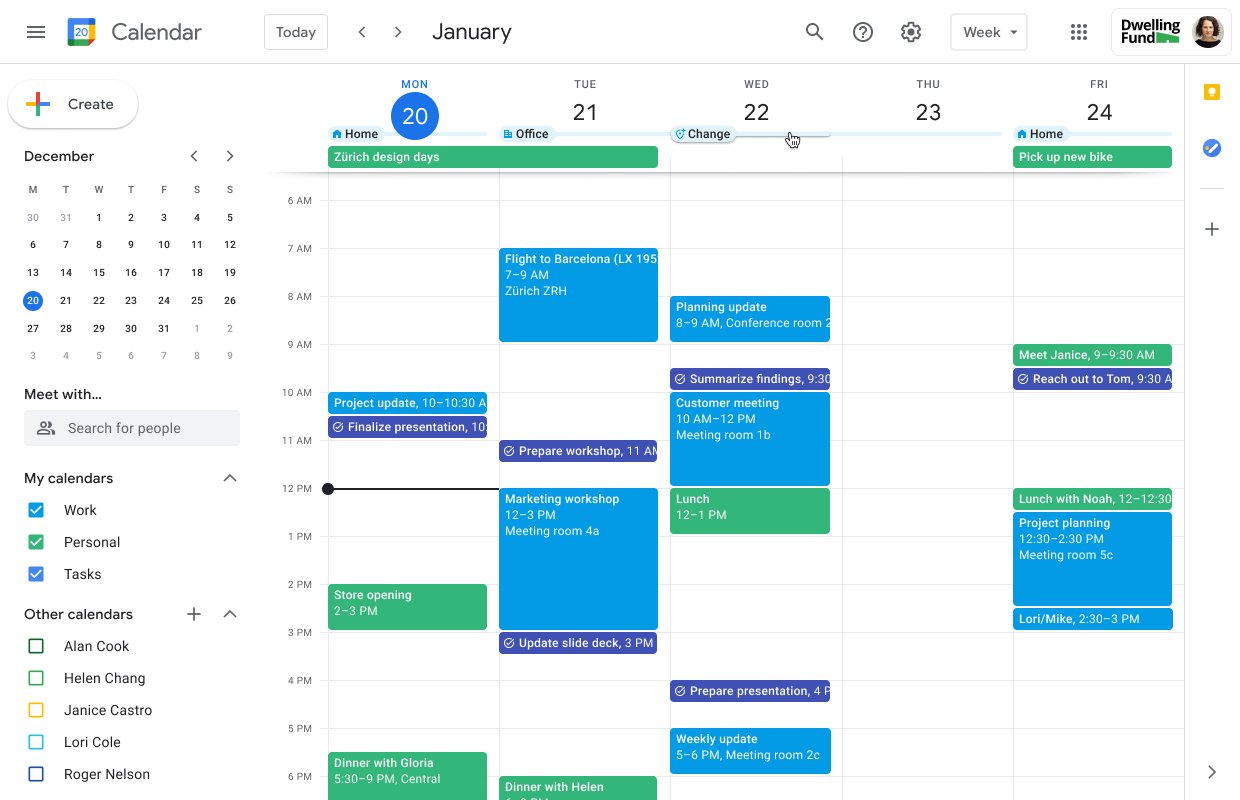How to Create a Successful Marketing Calendar?

Are you constantly feeling stressed about keeping your marketing efforts organized? Do you find yourself always playing catch-up, never able to get ahead? Or are your marketing efforts so scattered that they’re hard to track?
If you can answer yes to any of these questions, then you need a marketing calendar.
Read on to discover why a marketing calendar is so important and how easily you can create a marketing calendar that meets your needs.
Table of Content
- What is a Marketing Calendar?
- Why is a Marketing Calendar so Important?
- How to Make a Marketing Calendar?
- 5 Tips for Creating a Successful Marketing Calendar
- Summing Up
What is a Marketing Calendar?
A marketing calendar is a tool that businesses use to plan and monitor their marketing activities.
A marketing calendar usually includes a marketing plan, goals and tasks, the timing of marketing activities, and the expected outcomes of these efforts.
Why is a Marketing Calendar so Important?
Creating a marketing calendar is crucial for every business. It assists you to stay on track and organized, as well as gives you an overview of your marketing efforts for the entire year.
You can easily track your progress and stay focused on your goals. Additionally, marketing calendars can help you engage your team members and prepare them for upcoming marketing campaigns.
How to Create a Marketing Calendar?
Creating a successful marketing calendar requires careful planning and forethought. It takes a lot of time and effort, but it is well worth it in the end. Here's how to create an effective marketing calendar:
Step 1. Define Your Business Goals
The first step in creating a successful marketing calendar is to define your business goals. What are you hoping to achieve with your marketing efforts? Are you looking to increase brand awareness, drive traffic to your website, or generate leads?
It‘s also helpful to break down your goals into smaller, more manageable pieces. For example, if you want to increase your sales by 15% in the next year, you could break that down into smaller goals: Identify three target markets, produce five content pieces, and run two campaigns.
Having clear goals will help you create a targeted and focused marketing calendar and prioritize your activities to make sure they are in line with your business objectives.

Step 2. Research Your Target Audience
The next step is to research who your target audience is. Who are you trying to reach with your marketing messages? What are their needs and wants? What are their pain points?
By understanding your target audience, you will be able to create more targeted and effective marketing campaigns.

Step 3. Decide on the Strategies You’ll Use
Once you know who you're targeting and what kinds of content they're interested in, it's time to start planning out your strategy. Will you be using email marketing? Social media? Content marketing? Paid advertising? A mix of all of the above?
There are many different marketing strategies available, so it's important to choose the ones that will work best for your business.
Step 4. Plan Your Budget
Another important consideration when creating a marketing calendar is to determine how much money you will be spending on each campaign. Marketing budgets can vary widely depending on the size and type of business, so there's no right or wrong answer here. Just make sure that the budget you set is realistic and won't stretch your resources too thin.
Be sure to consider the costs of all the different channels you plan on using, such as paid advertising, social media campaigns, email marketing, etc. This will help you prioritize which campaigns are most important and which can be put on the back burner for now.
Once you have an idea of how much money you have to spend, you can start planning out specific budget amounts for each campaign.
Step 5. Schedule Your Activities
Now it's time to start mapping out when each marketing activity should take place. Start by creating a list of all the tasks that need to be completed for each campaign and then assign due dates accordingly.
Be sure to give yourself some wiggle room in case anything comes up or takes longer than expected- things rarely go according to plan!
Once everything has been scheduled out, transfer these dates over into your chosen project management tool so that everyone on your marketing team knows when things are due. And that's it!
Be sure to leave room for flexibility in case any unforeseen circumstances arise that require you to adjust your plans.

Step 6. Evaluate and Adjust as Needed
After you have carried out each activity on your calendar, take some time to review it. Did you fill your calendar with too many things but leave too little time? Did you forget about important things or deadlines?
Also, when you've used your calendar for a while, you'll want to evaluate your progress. This will allow you to see what’s working and what isn’t so that you can adjust your calendar and try something new. Use this information to adjust future activities accordingly so that you can better achieve your desired results.
5 Tips for Creating a Successful Marketing Calendar
Now that you know how to create a marketing calendar, here are some tips to help make yours even more successful.
Visualize Your Marketing Calendar
A visual marketing calendar is much easier to understand than an endless list of dates and tasks. You can create a calendar in a spreadsheet or use a tool like Fotor's calendar maker, Trello or Google Calendar to create a digital marketing calendar to visually plan out your dates and activities.

You can also set reminders in your calendar to help you stay on track and avoid missing any important dates. Mark down any important dates that are coming up, such as seasonal holidays or events.
Set Realistic Expectations
When designing your marketing calendar, it's important to be realistic about what you can accomplish in a given timeframe. If you try to do too much, you'll end up spreading yourself thin and not achieving any of your objectives.
Set Deadlines
What are the major campaigns or initiatives that you'll be working on this year? Plot these out first, and then set deadlines for each of them. This will help to keep everyone on track and ensure that tasks are completed in a timely manner.
Be Flexible
As much as you may try to plan everything out in advance, there will always be unforeseen circumstances that arise. Allow for some flexibility in your calendar so that you can make adjustments as needed.
Get Advice From Others
In order to create a successful marketing calendar, it's important to get input from all of the stakeholders involved. What does each team members need to accomplish in order for the overall goal to be met?
It’s also a good idea to engage your whole team in the process of creating your calendar. This will help them feel like they are part of the process and invested in the success of your business. It will also help you avoid misunderstandings and miscommunications when it comes to your team members’ responsibilities.
Summing Up
An effective marketing calendar can help you organize your marketing strategies, track your marketing activities, and measure your results.
Now that you've read all about how to create a marketing calendar, it's time to put it into action.
Thanks for reading! I hope this guide was helpful in getting you started on creating your own successful marketing calendar.







